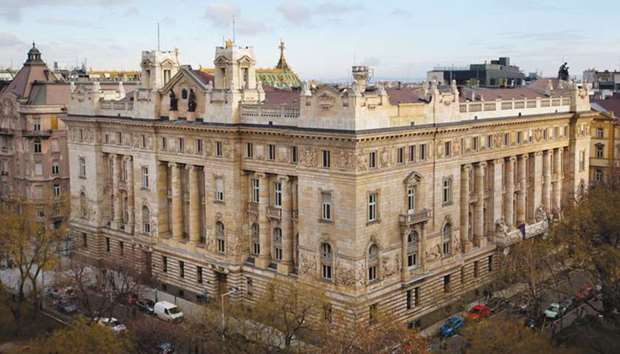Hungary’s central bank cut the overnight deposit rate deeper into negative territory, making good on pledges of monetary easing that have knocked the forint weaker from a two-year high.
The National Bank of Hungary cut the rate offered on its overnight deposits, the facility where commercial lenders park most of their cash, by 10 basis points to minus 0.15%, in line with the median estimate in a Bloomberg survey.
Policy makers kept the benchmark three-month deposit rate at a record-low 0.9%, corresponding with forecasts in a separate survey. The cut failed to stop the forint from strengthening again.
Rate setters are embarking on another round of unconventional easing after signalling readiness to counter downside risks to their inflation forecast that have been bolstered by the forint appreciating to its strongest level since 2015.
In contrast, the Czech central bank has started raising rates, while regional peer Poland’s central bank chief has pledged to keep policy on hold until as late as 2019. The European Central Bank is also preparing to decide the future of its bond-buying program and the path to policy normalisation.
“We think this may be the start of a new round of monetary easing that may continue in the next months,” Gergely Urmossy, a Budapest-based economist at Erste Group Bank, said in a report after the decision.
Repeated pledges by central bankers to loosen monetary conditions have pulled the forint from a two-year high reached after the August rate meeting when investors weren’t convinced by signals from the Monetary Council that more easing was on the way.
Still, the announcement of the overnight deposit rate cut failed to prevent the forint from snapping five days of declines after reaching a two-month low. The currency rose 0.3% to 308.44 per euro at 2:25pm in Budapest.
The central bank “has its work cut out for it to deliver something bolder than market expectations or risk HUF strengthening again,” Phoenix Kalen, director of emerging markets strategy at Societe Generale SA in London, said in a note. “The market’s perception is that the MNB is under-delivering on a package of easing measures.”
The central bank was scheduled to publish a statement in Budapest explaining the decision later yesterday. The regulator will also release its new inflation and economic growth forecasts and give the fourth-quarter cap on deposits in the benchmark facility, which economists in a Bloomberg survey predicted will be halved to 150bn forint ($581mn).
They also expect the regulator to offer foreign-currency swaps with maturities of more than 12 months, pumping more liquidity into the banking sector.
The cap on the benchmark facility has sent funds into the overnight facility as well as into the government bond market and into lending, lowering borrowing costs. Hungary sold Treasury bills at a negative average yield for the first time this month, while net volume in the central bank’s overnight deposit and lending instruments, for which access is unlimited, has risen to almost 800bn forint.
The central bank is convinced that downside risks to the inflation outlook are “increasingly materialising,” Deputy Governor Marton Nagy said on September 8. He cited one-time effects for the increase in the consumer-price index to an annual 2.6% in August from 2.1% in July. Policy makers target 3% inflation in the medium term.
With economic growth in full swing and wages and property prices soaring, Hungary’s economy is “hitting capacity constraints” and more easing risks stoking inflation and asset-price bubbles, according to Liam Carson, an economist at London-based Capital Economics.
“Regardless of what is announced in the statement, the move to ease what are already extremely loose monetary conditions looks like a policy misstep,” Carson said in a report after the rate decision. “Ultimately, the central bank could be forced into more aggressive rate hikes further down the line.”

The headquarters of the Magyar Nemzeti Bank, Hungary’s central bank, in Budapest. The National Bank of Hungary cut the rate offered on its overnight deposits, the facility where commercial lenders park most of their cash, by 10 basis points to minus 0.15%, in line with the median estimate in a Bloomberg survey.
